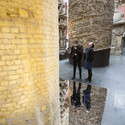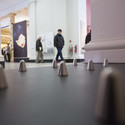
The great schools of architecture have been around since time immemorial, or at least that's how it can often feel. In London, a city particularly dense with institutions of this calibre, this is perhaps felt more acutely. How, then, do you develop an entirely new school in this tightly packed environment which has the potency and capacity to compete? Will Hunter, former executive editor of the London-based Architectural Review, began a process to do just this with an article in 2012. Following this, he set up the ARFA—Alternative Routes For Architecture—in order to explore different models for architectural education, calling upon professionals and academics to contribute to a series of informal discussions.
“When the tuition fees in the UK escalated to around £9000 per year in 2013, it got me thinking about different models for architectural education,” Hunter recalls. The casual meetings held around this time gradually become more serious until, “at a certain point, we decided to test them: to make a school.” The project gathered momentum from that point on and now, two years later, the London School of Architecture (LSA) are preparing to take in their first ‘trailblazing cohort’ of postgraduate students.








.jpg?1425513674)



_Hufton___Crow.jpg?1427821798)
_Hufton___Crow.jpg?1427820634)
_Hufton___Crow.jpg?1427821656)
_Hufton___Crow.jpg?1427819483)
_Hufton___Crow.jpg?1427821291)
























